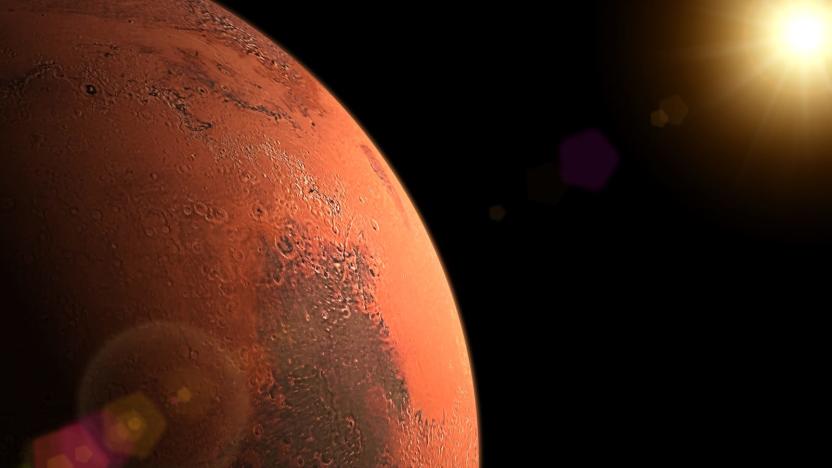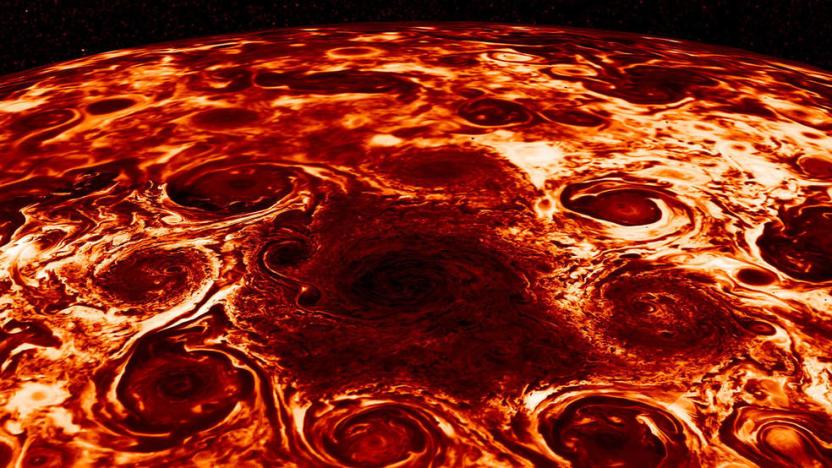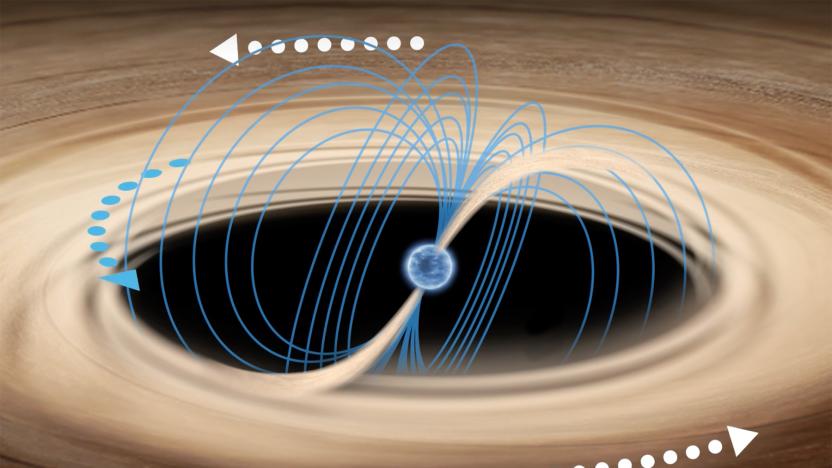magneticfield
Latest

'Impossible' EM drive may actually be impossible after all
If something sounds too good to be true then it probably is, so goes the old saying. And unfortunately, it now seems this is also applicable to the "impossible" EM drive, first touted over a decade ago as a way to generate thrust using microwaves, thereby eliminating the need for fuel in deep space exploration. The initial research caused huge excitement, with scientists venturing it would be possible to travel from Earth to Mars in just a few weeks if the technology could be scaled up, but new tests suggest that's unlikely to happen because it doesn't appear to work at all.

Jupiter's north pole comes to life in this 3D infrared video
If nothing else, the spacecraft Juno, which is currently in an elongated orbit of Jupiter, has taught us that the largest planet in our solar system is weird. From spectacular photographs to readings that make us question what this giant even is, Juno has done a spectacular job uncovering the gas giant's mysteries. Now, NASA has released a 3D infrared movie of Jupiter's north polar region, depicting the intense storms in the area, as well as the dynamo that powers the planet's massive magnetic field.

Moon discovery may expand where we search for alien life
Every discovery we make about the universe has implications for us. Understanding how our solar system formed, and how we got here, helps us figure out how likely it is that we'll find life on other planets. Even just our corner of the galaxy is vast; anything we can do to help narrow the possibilities of where we can and should search for life beyond our planet is helpful. And that's why a new study from Rutgers and MIT is so interesting. A team discovered that the moon's magnetic field survived much longer than previously thought.

DARPA has laid the groundwork for thought-powered prosthetics
New research from the government's mad science wing, DARPA, could make life an awful lot easier for people who use prosthetic limbs. You see, DAPRA has devised what it calls the "Atomic Magnetometer for Biological Imaging in Earth's Native Terrain." Or, "AMBIIENT" if you're into the whole brevity thing.

Magnetic fields could explain an 'erratic' neutron star
Scientists think they've discovered why an unusual star system is emitting "sudden, erratic and extremely intense" bursts of X-rays. Using three different space telescopes, the team set out to investigate "Rapid Burster," a binary system first discovered in the 1970s, in 2015. It contains a small star and a "neutron star," the term given to collapsed cores of formerly giant stars. Normally, this setup would produce "type-I" bursts, as the dense neutron star strips the gas of its younger neighbor. The Rapid Burster does this too, but curiously it also exhibits rarer, high energy "type-II" blasts.

That's hot: Heat-based recording could boost magnetic drive speed, performance
Magnetic fields are pretty nifty for levitating stuff, carving sponge-like thingamajigs and, of course, data storage. But an international team led by the University of York in the UK has figured out a way to replace magnetic fields for the latter by using ultra-short heat pulses instead. Conventional thinking typically dictates that an external magnetic field is required to store data on a magnetic medium. By using heat, however, researchers were able to record terabytes of information per second in a way that is also more energy-efficient compared to current hard drive technology. As for the time it'll take for the tech to make it to market, well, we have a feeling it won't be as fast.

Levitating superconductor floats within a magnetic field so you don't have to (video)
What happens when you douse a superconducting urinal cake with liquid nitrogen? We haven't given it too much thought, to be honest, though we're guessing it would look a lot like the "levitating" disc pictured above. Developed by researchers at Tel-Aviv University, this device is actually a superconductor hovering over a "supercooled" magnet. While locked within the magnetic field, it can rotate around a vertical axis, turn upside down or do laps around a track -- all thanks to a phenomenon that Tel-Aviv's physicists call "quantum trapping." We're not really sure what that entails, but we do know that the results are pretty incredible. Check them out for yourself, after the break. [Thanks to everyone who sent this in]

Japan sends a ribbon into space, asks it to test the magnetic currents
Tether propulsion seems to be the OLED of the spacefaring world, carrying as it does a lot of promise but seemingly never ready for the big time. The fundamental premise is as simple as it is appealing -- a long strip of metal stretched out in space can theoretically exploit the Earth's magnetic field to maneuver itself without expending any fuel of its own. This is done by sucking up ionospheric electrons at one end and, predictably enough, spitting them out at the other, allowing current to flow through the tether. Japan's aerospace agency has recently shot off a testing vehicle for just this theory, a 300 meter-long, 2.5cm-wide ribbon, which has managed to successfully generate a current. No thrust-measuring equipment was on board and it's still very early days, but hey, there's at least the chance that one day satellites will all sprout long, elegant tails to power their way through the sky... and into our private lives.





